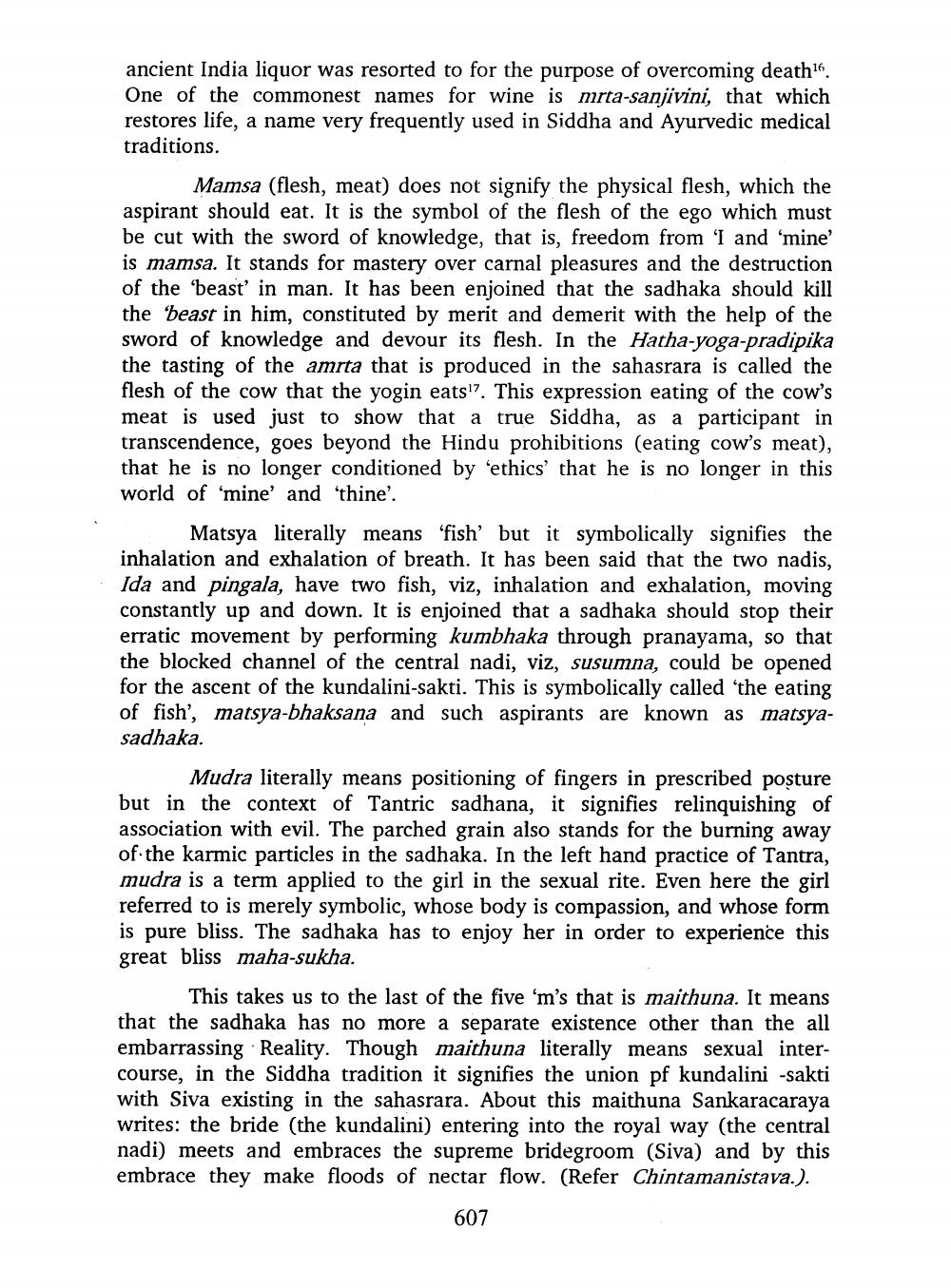________________
ancient India liquor was resorted to for the purpose of overcoming death16. One of the commonest names for wine is mrta-sanjivini, that which restores life, a name very frequently used in Siddha and Ayurvedic medical traditions.
Mamsa (flesh, meat) does not signify the physical flesh, which the aspirant should eat. It is the symbol of the flesh of the ego which must be cut with the sword of knowledge, that is, freedom from 'I and 'mine is mamsa. It stands for mastery over carnal pleasures and the destruction of the beast' in man. It has been enjoined that the sadhaka should kill the beast in him, constituted by merit and demerit with the help of the sword of knowledge and devour its flesh. In the Hatha-yoga-pradipika the tasting of the amrta that is produced in the sahasrara is called the flesh of the cow that the yogin eats!?. This expression eating of the cow's meat is used just to show that a true Siddha, as a participant in transcendence, goes beyond the Hindu prohibitions (eating cow's meat), that he is no longer conditioned by 'ethics' that he is no longer in this world of 'mine' and 'thine'.
Matsya literally means 'fish' but it symbolically signifies the inhalation and exhalation of breath. It has been said that the two nadis, Ida and pingala, have two fish, viz, inhalation and exhalation, moving constantly up and down. It is enjoined that a sadhaka should stop their erratic movement by performing kumbhaka through pranayama, so that the blocked channel of the central nadi, viz, susumna, could be opened for the ascent of the kundalini-sakti. This is symbolically called 'the eating of fish', matsya-bhaksana and such aspirants are known as matsyasadhaka.
Mudra literally means positioning of fingers in prescribed poşture but in the context of Tantric sadhana, it signifies relinquishing of association with evil. The parched grain also stands for the burning away of the karmic particles in the sadhaka. In the left hand practice of Tantra, mudra is a term applied to the girl in the sexual rite. Even here the girl referred to is merely symbolic, whose body is compassion, and whose form is pure bliss. The sadhaka has to enjoy her in order to experience this great bliss maha-sukha.
This takes us to the last of the five 'm's that is maithuna. It means that the sadhaka has no more a separate existence other than the all embarrassing Reality. Though maithuna literally means sexual intercourse, in the Siddha tradition it signifies the union pf kundalini -sakti with Siva existing in the sahasrara. About this maithuna Sankaracaraya writes: the bride (the kundalini) entering into the royal way (the central nadi) meets and embraces the supreme bridegroom (Siva) and by this embrace they make floods of nectar flow. (Refer Chintamanistava.).
607




